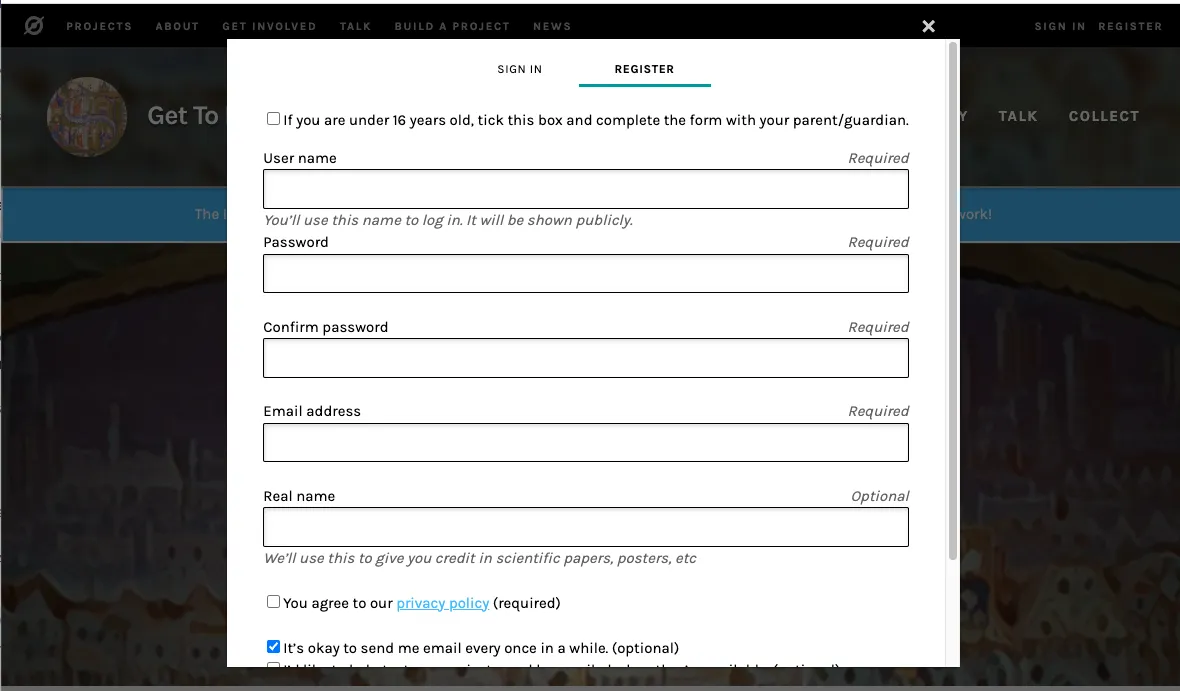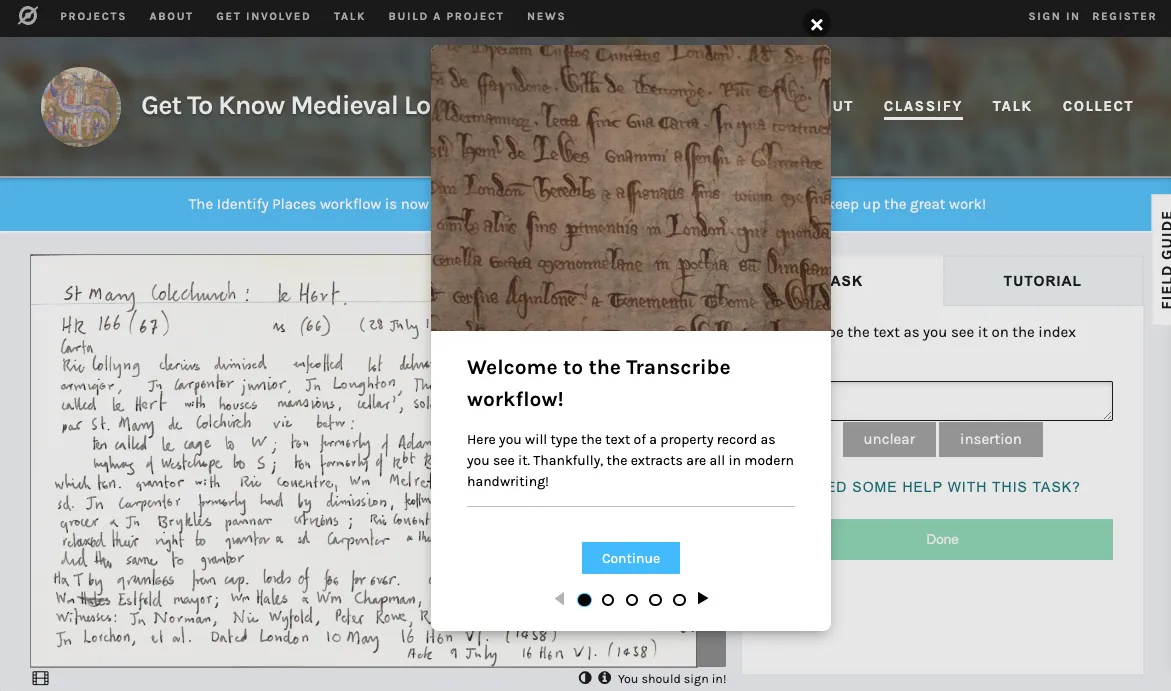About Get To Know Medieval Londoners:
The goal of this project is to create digital transcriptions of medieval wills and property records from the city of London. These documents are from London's Husting Court, a civic body that heard the cases of the city's inhabitants and preserved records of judgements and agreements. The documents contain incredibly detailed information about where people lived, who they interacted with, and what was important to them. Wills and property deeds can be particularly revealing when it comes to genealogy, as it is not uncommon to find carefully prepared lists of spouses and children in a will, or to trace a home through three generations of owners in an enrolled charter.
The original records, which are held in the London Metropolitan Archives, are very difficult to read due to the complexity of the script and the extensive use of Latin abbreviations. Luckily, researchers working on the Social and Economic Study of Medieval London project in the 1980s translated and transcribed the records onto index cards - over 4,000 of them! These cards provide an excellent opportunity for those interested in history and genealogy to get their hands on medieval records, but they have never been digitised. That's where Get To Know Medieval Londoners comes in.
Get To Know Medieval Londoners is an international collaboration between the Institute of Historical Research in London (which currently holds the physical copies of the index cards) and Center for Medieval Studies at Fordham University. We are not only working to create accurate digital versions of medieval records, but also to make this material more accessible to those who wish to use it in their own research. This project will also further the study of London between the 13th and 16th centuries, particularly in regards to the conditions of urban housing and occupational distribution, the concentration of wealth in particular parishes, and the operation of social networks among the property-holding class. All of the data produced through this project will become part of the open-access prosopographical database on the Medieval Londoners site, where participants will receive credit for their contributions.
Since launching on the Zooniverse platform on 28 June 2022, Get To Know Medieval Londoners has attracted over 1,200 volunteers who together have worked on several thousand documents. Our site has extensive discussion boards where participants can ask questions and share their findings. In just a few months, volunteers have added dozens of new abbreviations to reference guides, helped each other translate phrases from Anglo-Norman, found rare examples of women admitted to the Freedom of the City, searched for their own medieval ancestors, and much more.
How to take part in Get To Know Medieval Londoners:
Step 1
Open the Get To Know Medieval Londoners homepage in a web browser. You can read more about the project goals and research in the 'About' section.

Step 2
Before you get started, consider creating an account on the Zooniverse platform. While this is not required for participation, it will allow you to create your own collections of documents you transcribe, and will enable us to give you credit for your work. To create an account, click the "Register" button in the top right corner of the page and follow the prompts. If you already have an account with Zooniverse from a prior project, click 'Sign In'.

Step 3
On the homepage, scroll down to the section labeled "Get Started". There is a selection of three workflows to choose from. For the purposes of this example I will use "Intermediate: Transcribe", but you can try the other two workflows if you prefer.

Step 4
Each workflow has a tutorial that you can view before you start transcribing.

Step 5
You will see an image of an index card with a transcription of a medieval property record. Transcribe the text as you read it into the box on the right. When you are finished, click the green box that says 'Done'.

Step 6
There are lots of resources available to help you through the process. In addition to the workflow tutorials, each prompt has further instructions accessible by clicking the "Need some help with this task?" button under the prompt box. The "Field Guide" contains general information about the sources and what you can expect to find in them, including guides to identifying individuals, deciphering dates, and expanding abbreviations. Consider reading through the "Transcription Guidelines" section of the field guide before starting the transcription workflow. The field guide is accessible from all pages of the site by clicking the "Field Guide" button on the far right side of your screen (note: the text on the button is oriented vertically), which will open a sidebar with guide sections. You can close the field guide by clicking the "x" at the top right of the sidebar.
Should you need further help or have a question/comment, please feel free to make a post on the discussion boards. There are specific boards for some topics, such as "Families & Genealogy", that may be of interest. You will need to create an account with Zooniverse in order to post on the discussion boards.
You can always get back to the homepage by clicking the "Get to Know Medieval Londoners" text at the top left of any page.
Contact on the day
If you have any questions or comments about this project or how to participate during Transcription Tuesday on 31 January, please email me on gcampagna1@fordham.edu.
